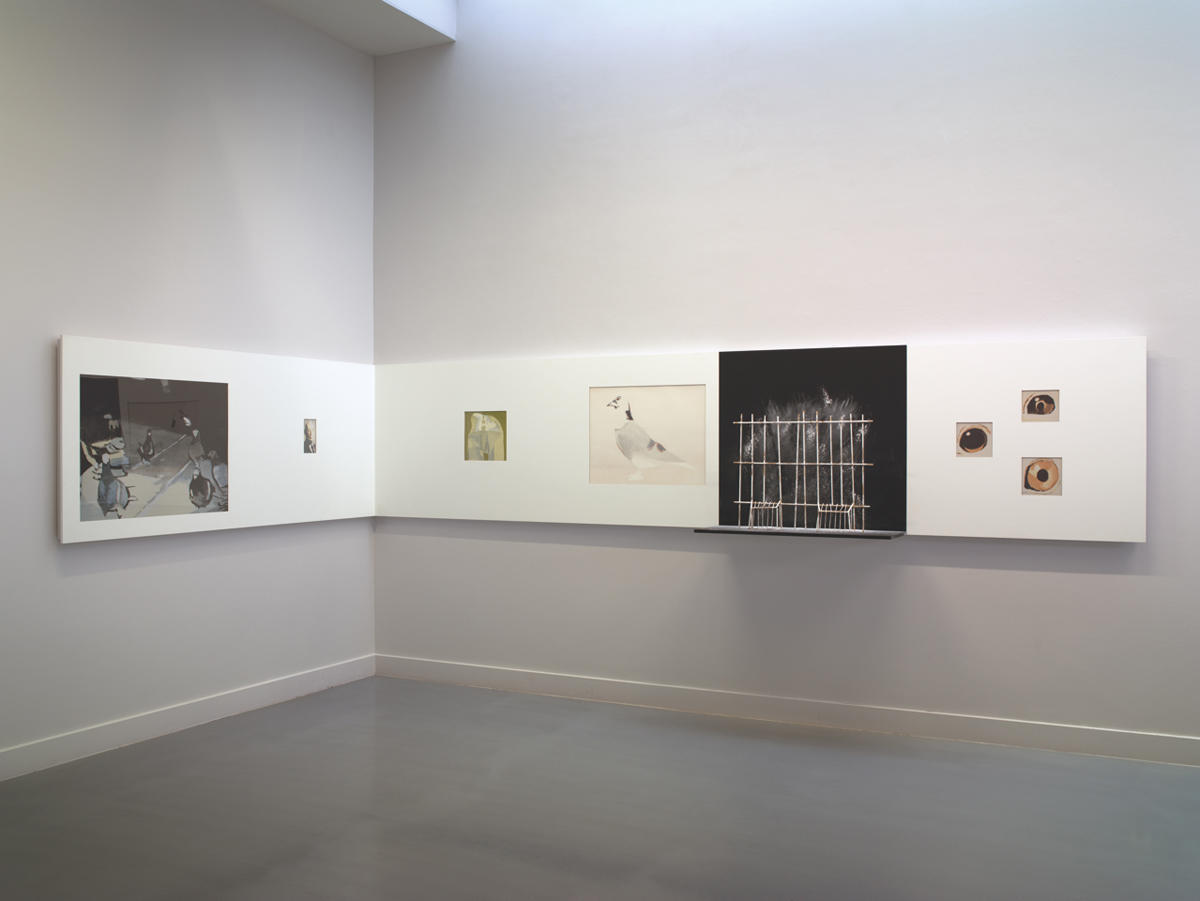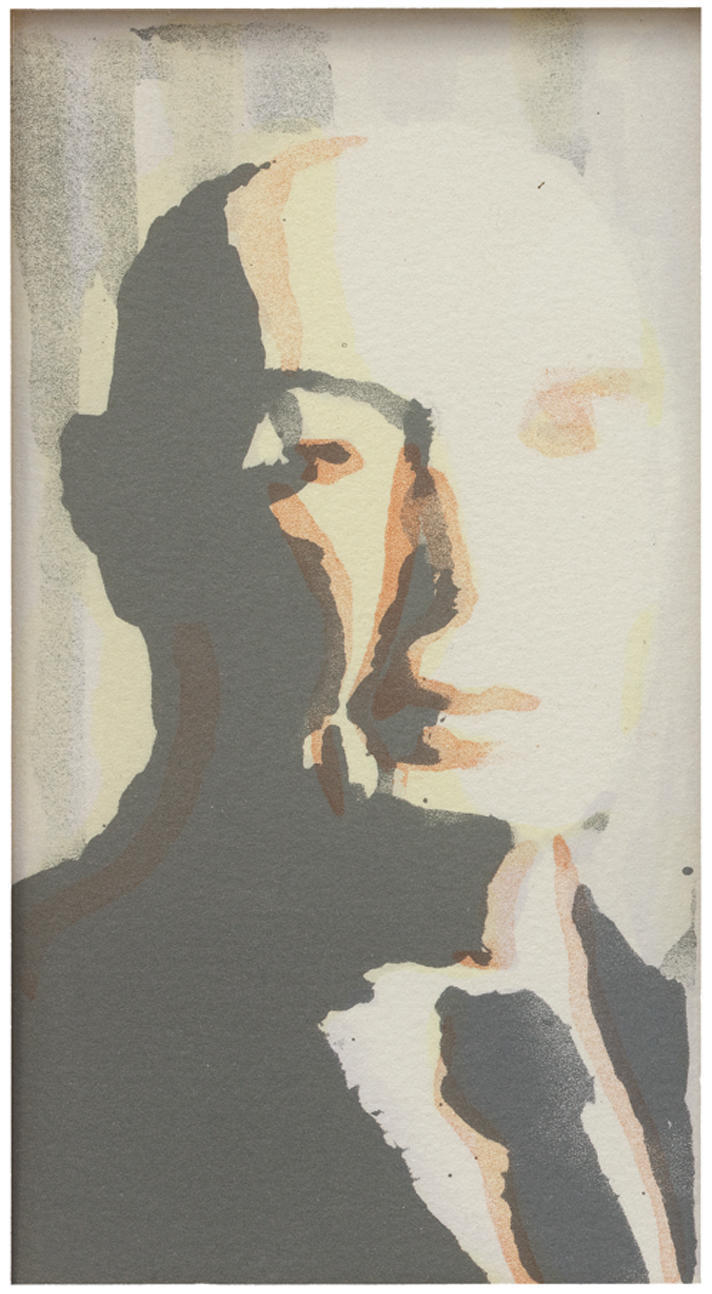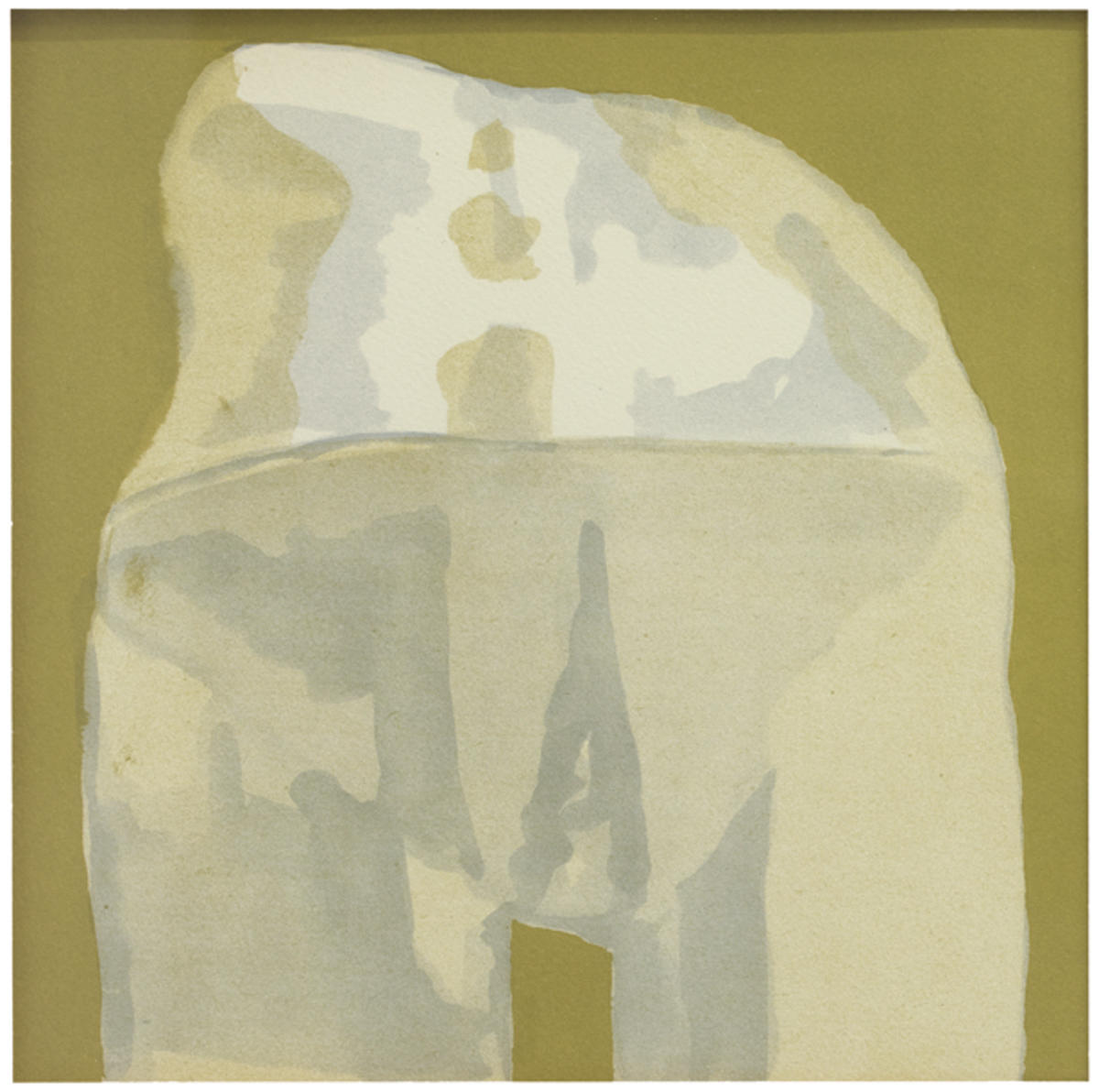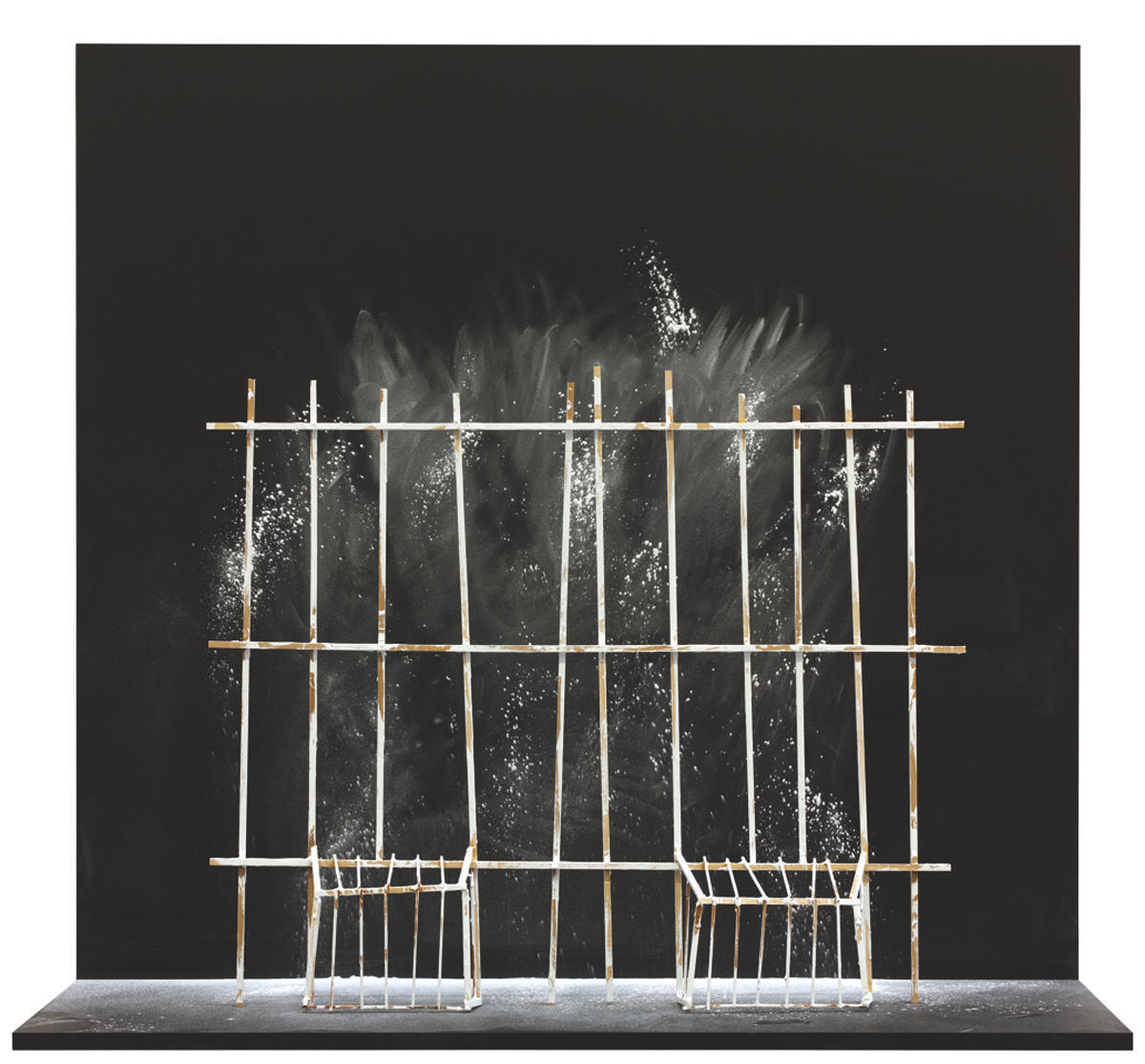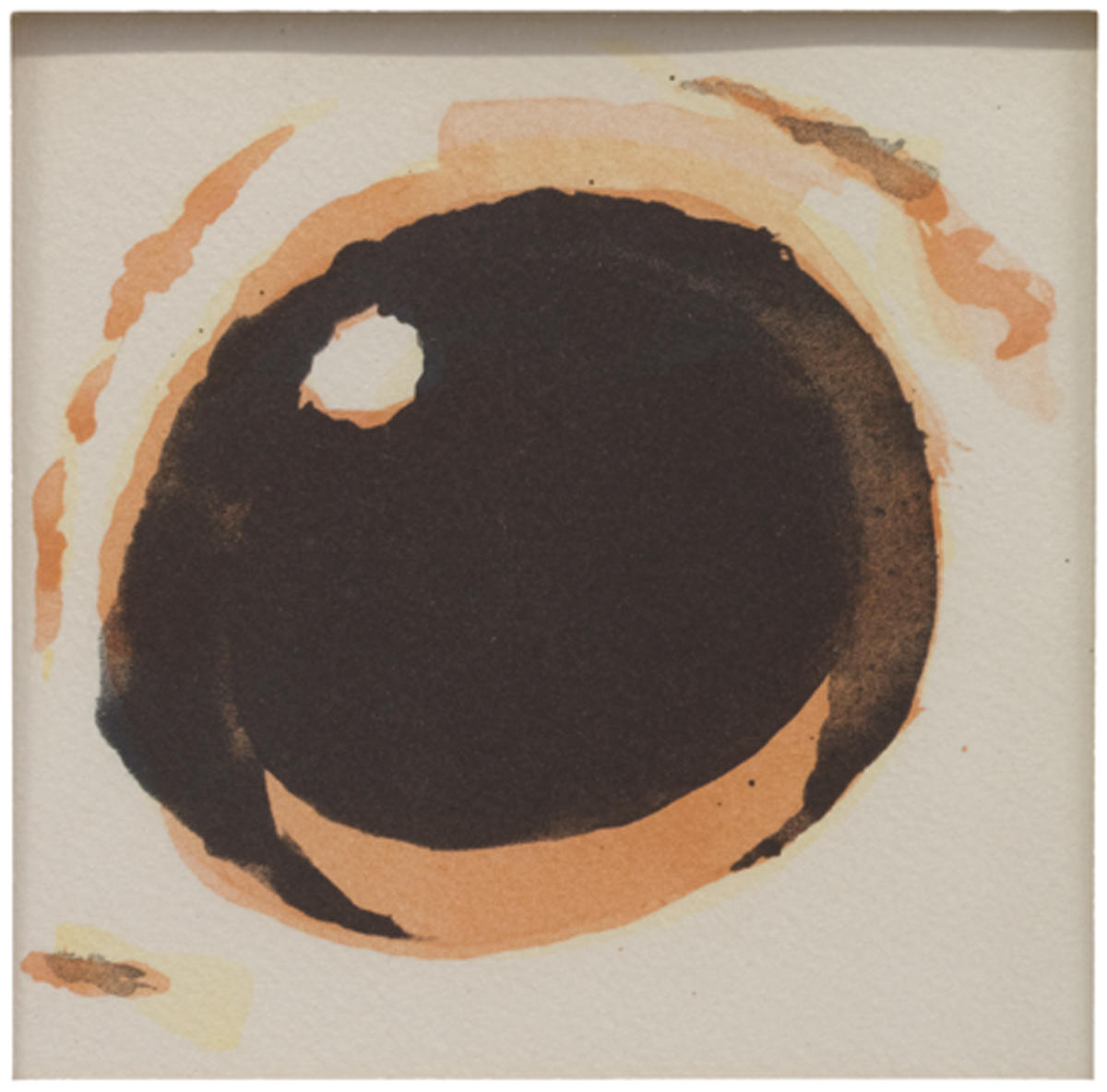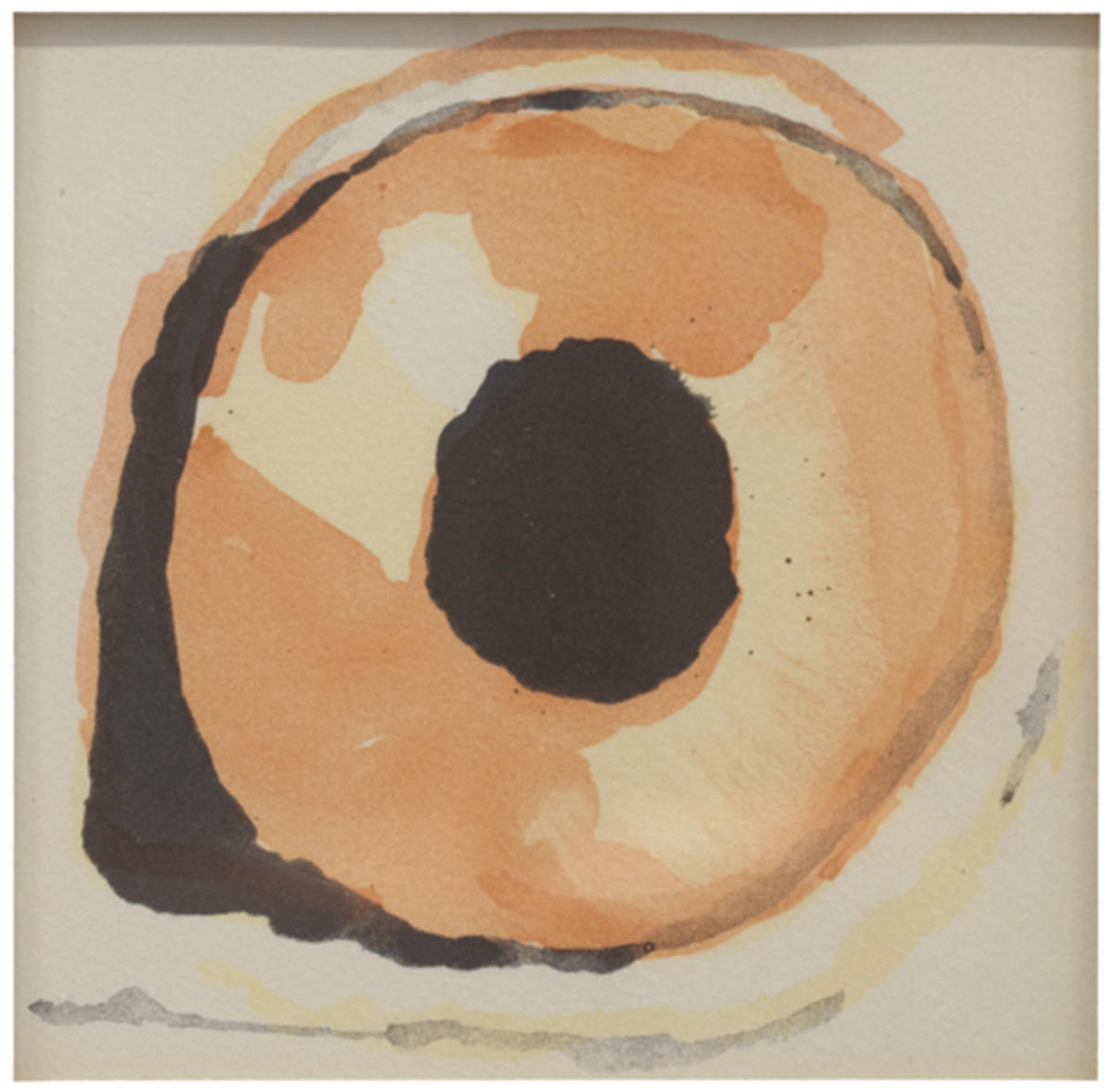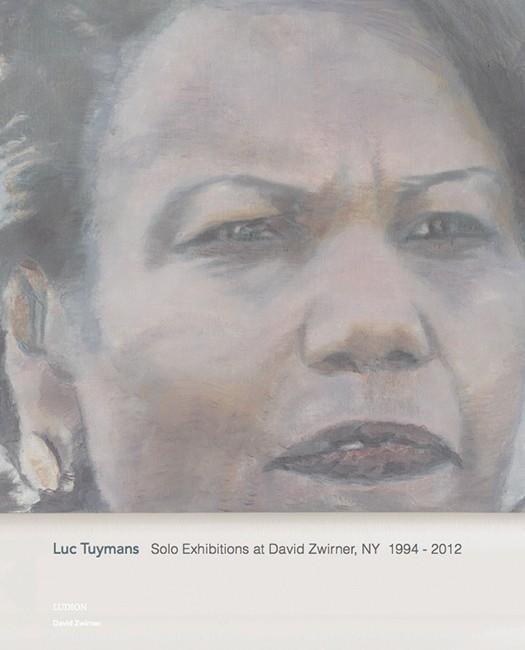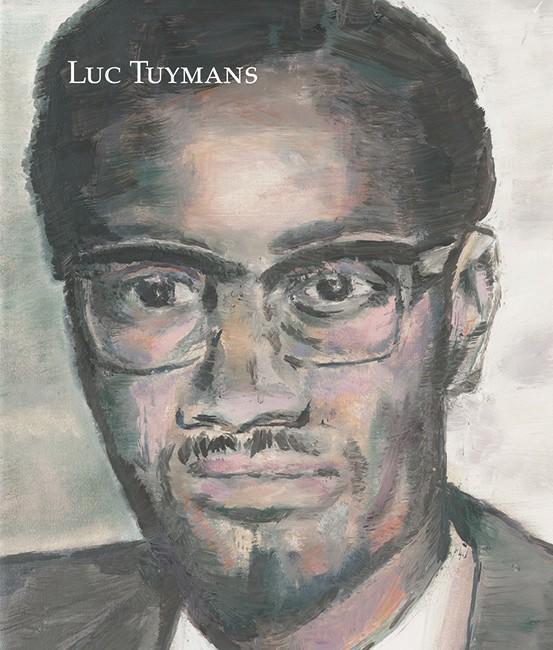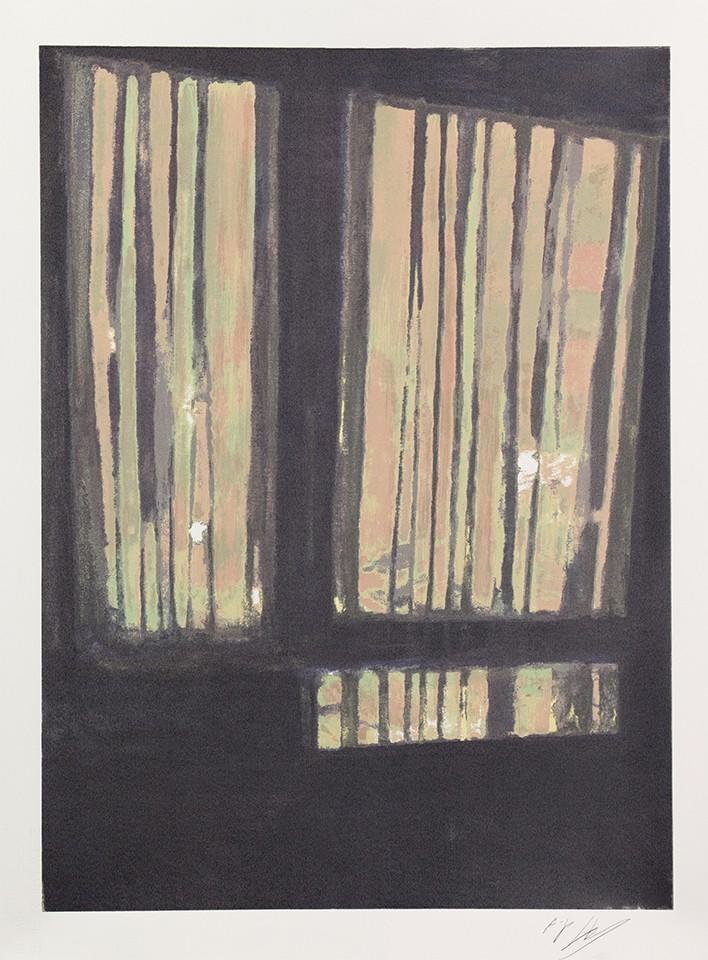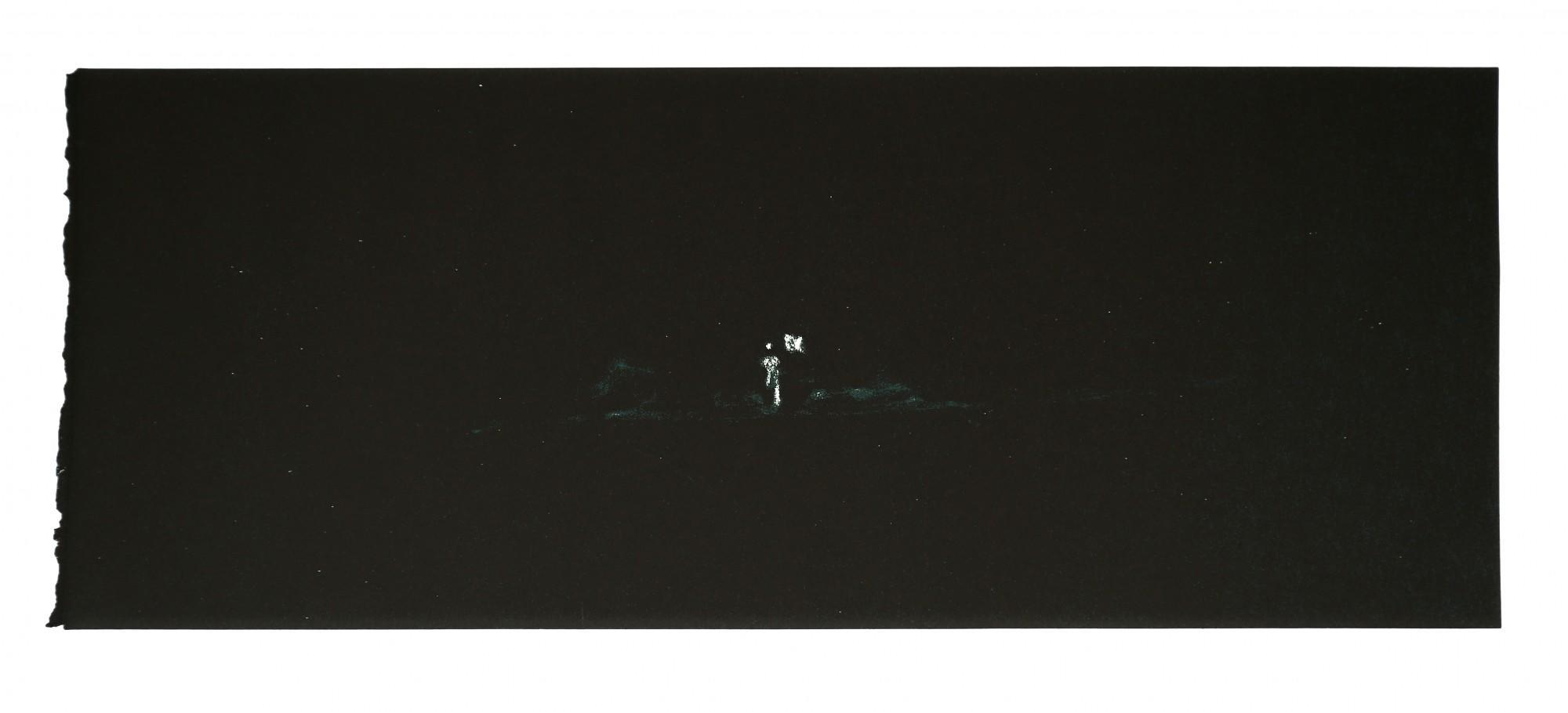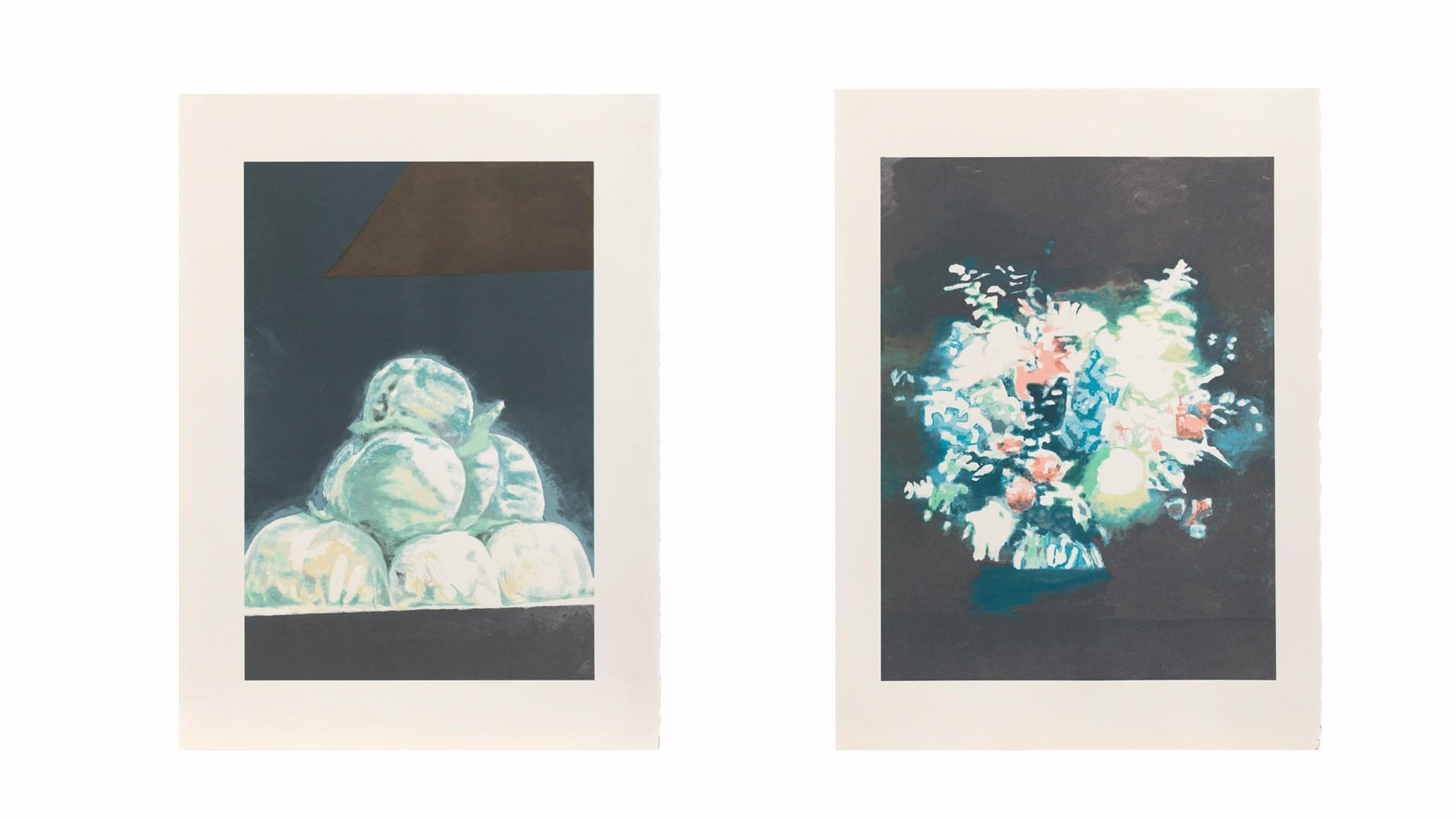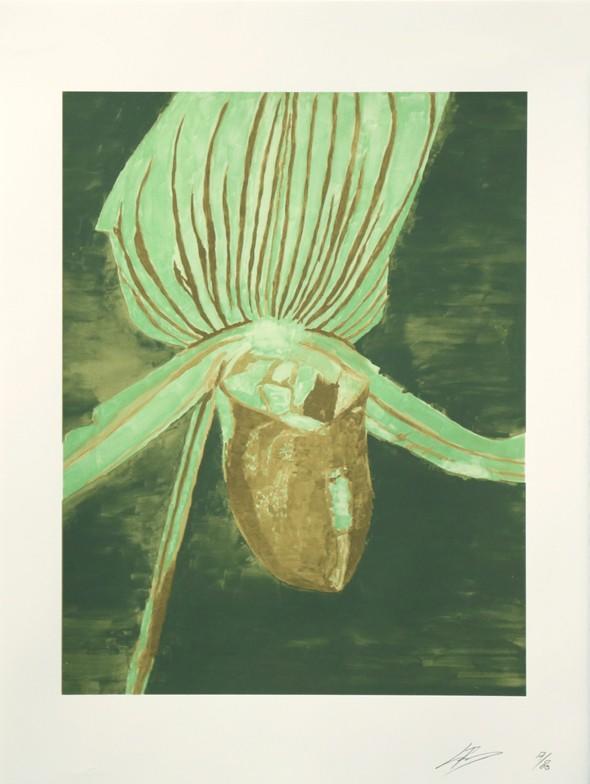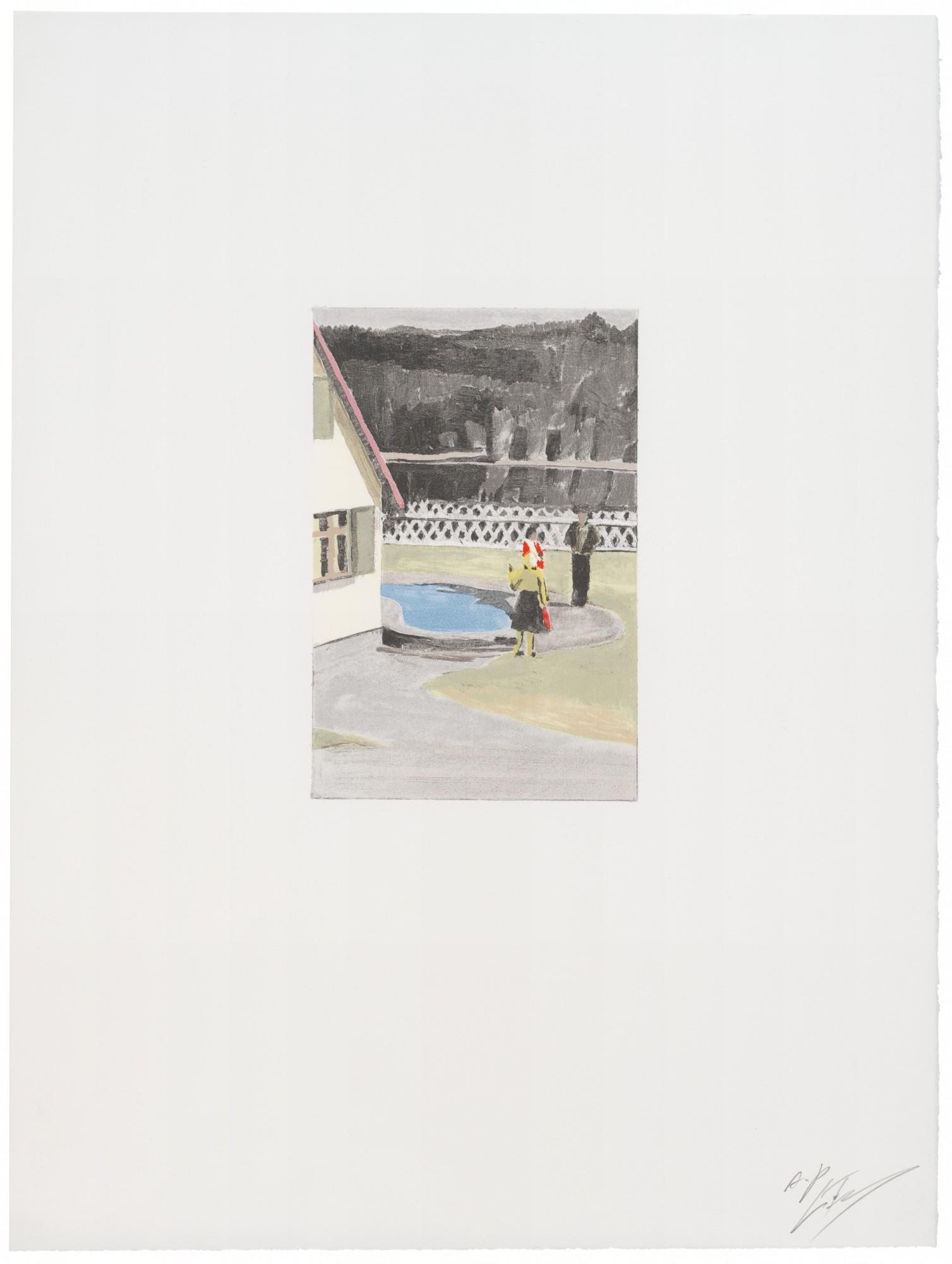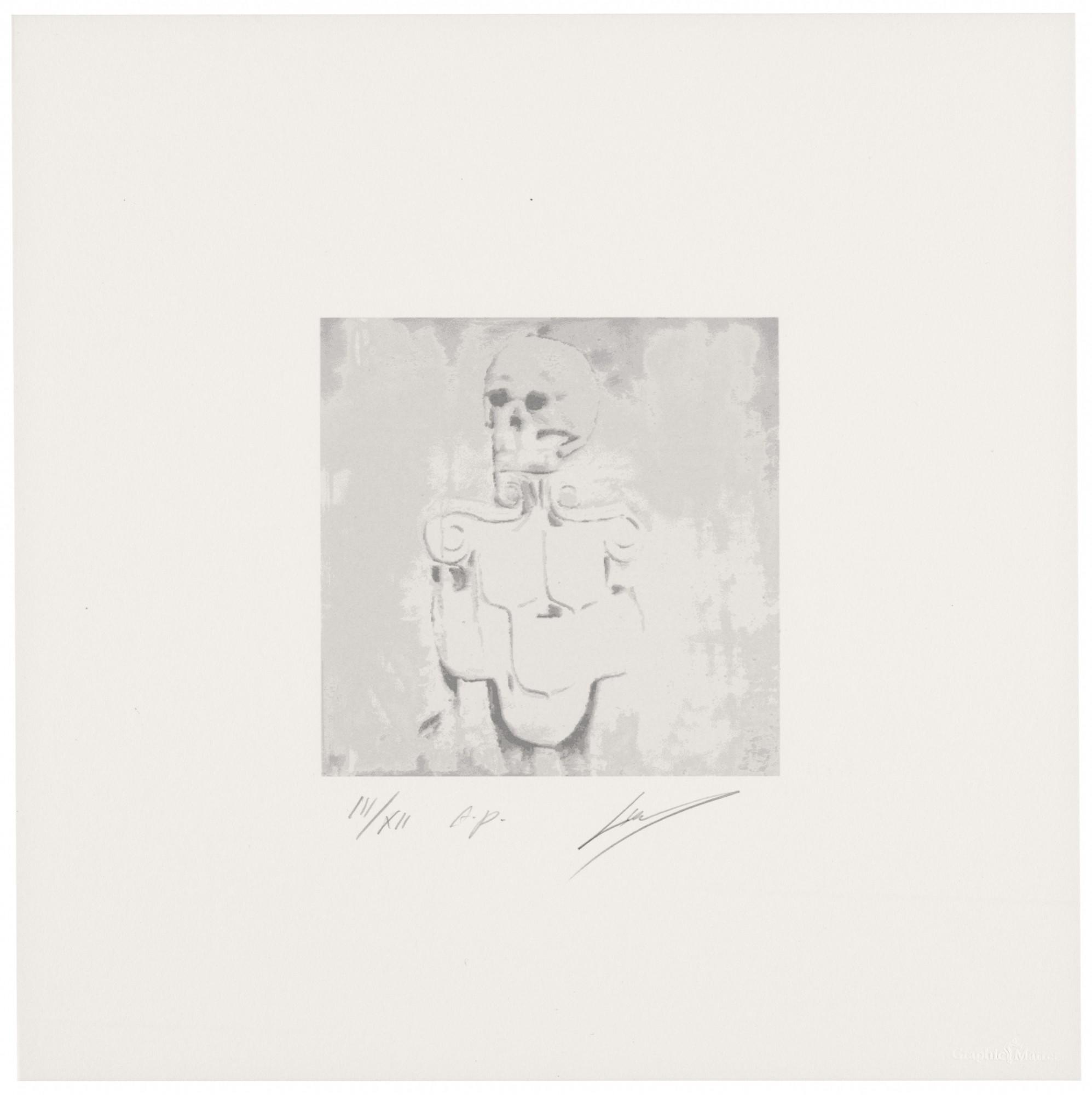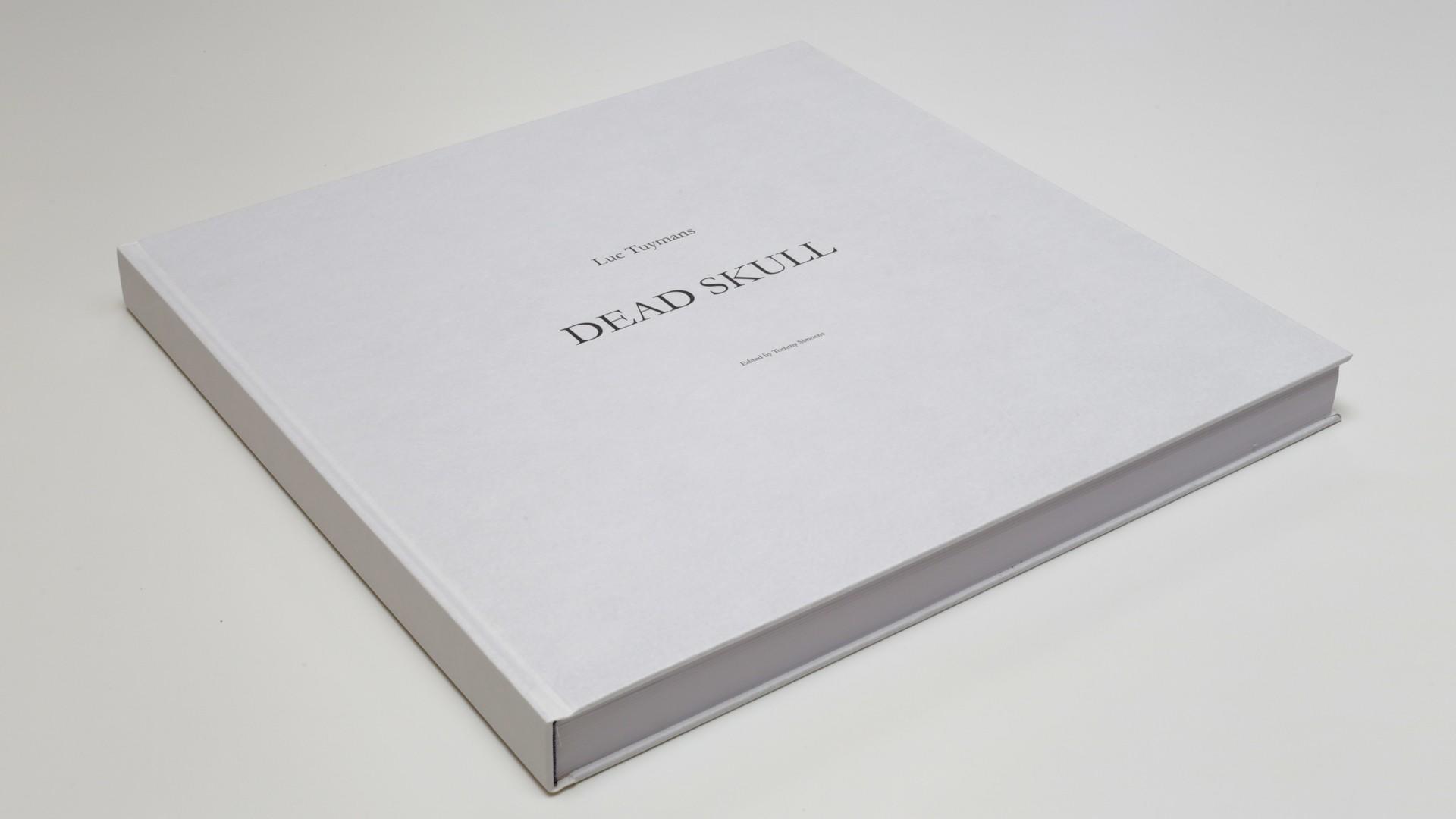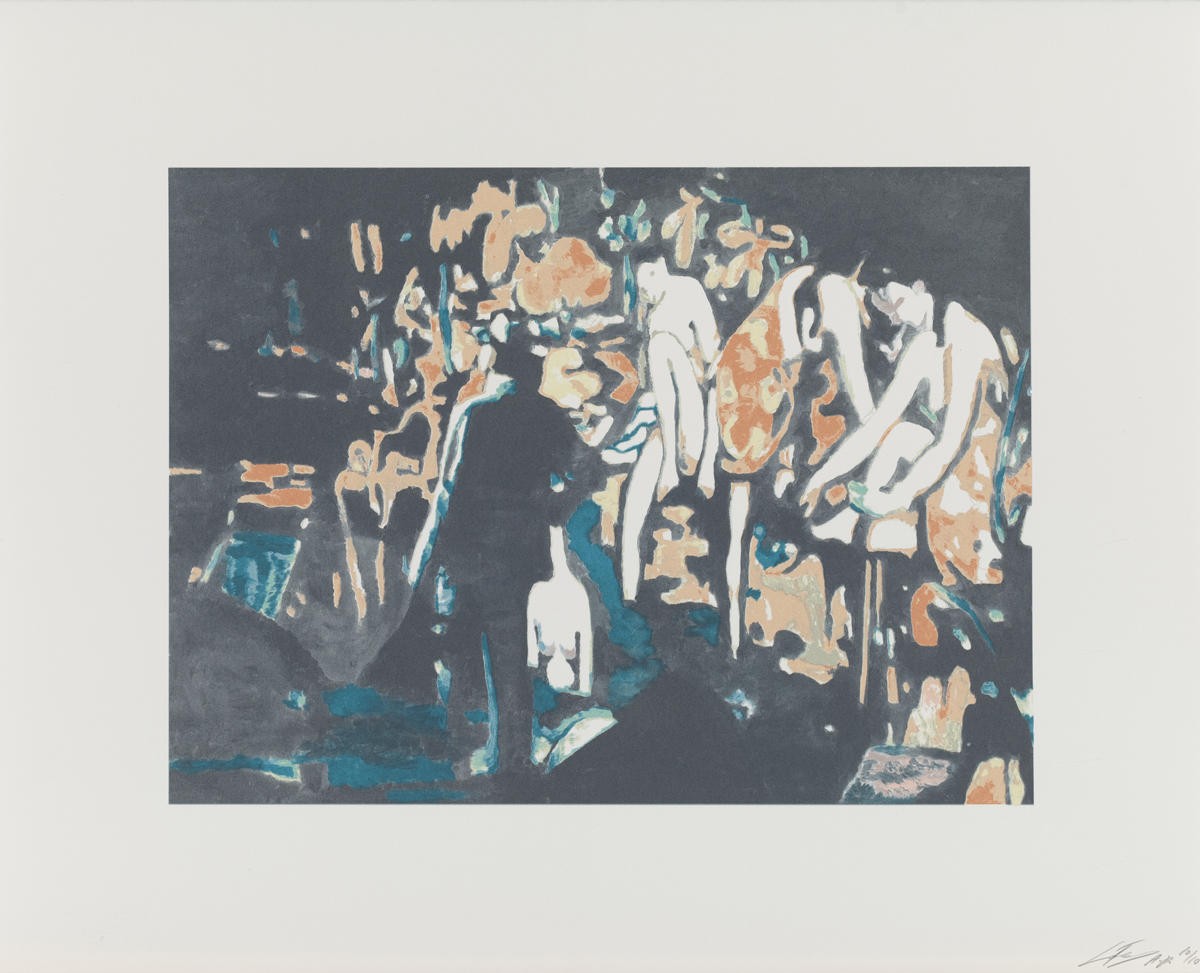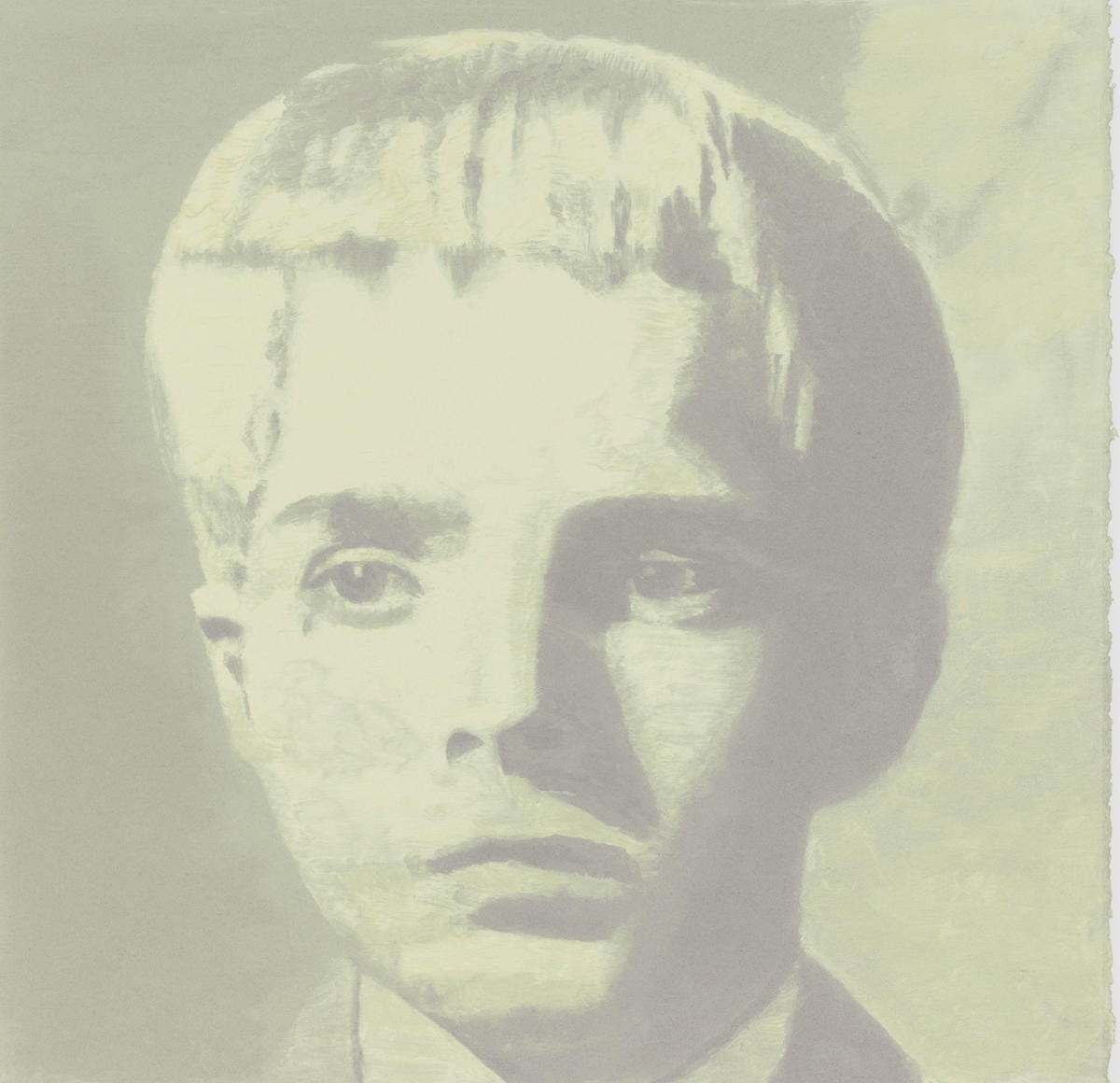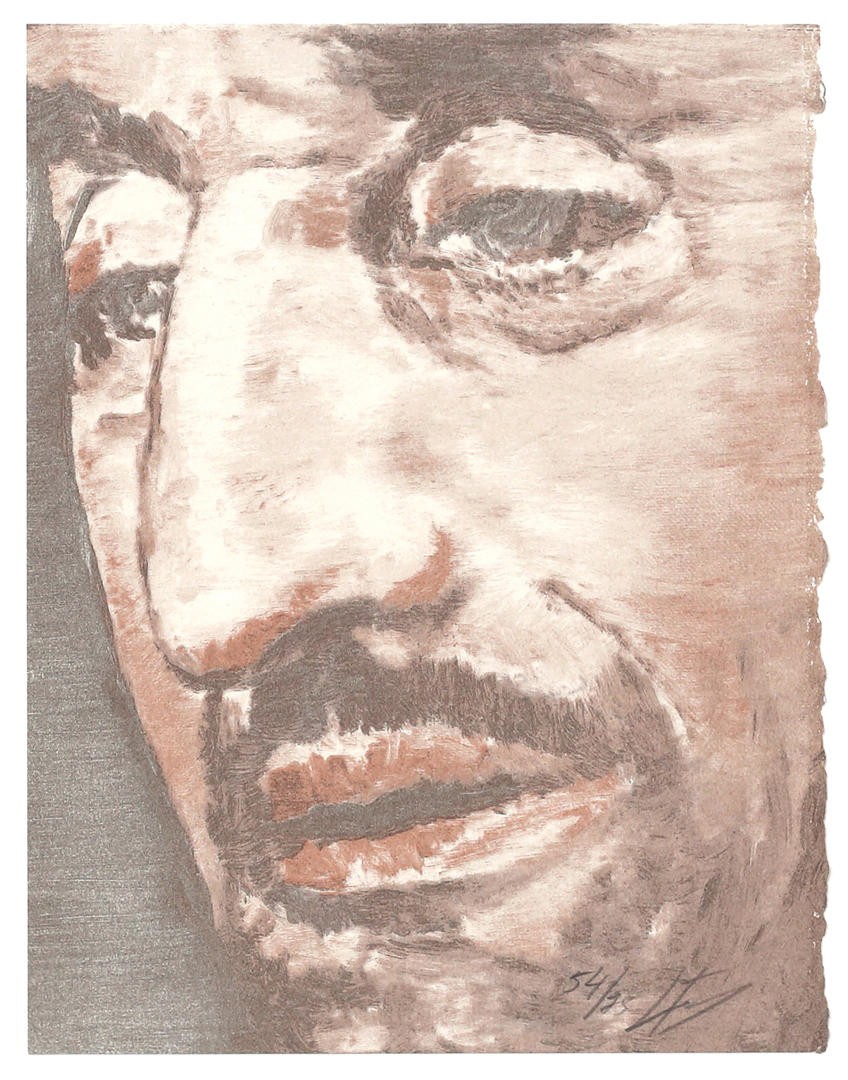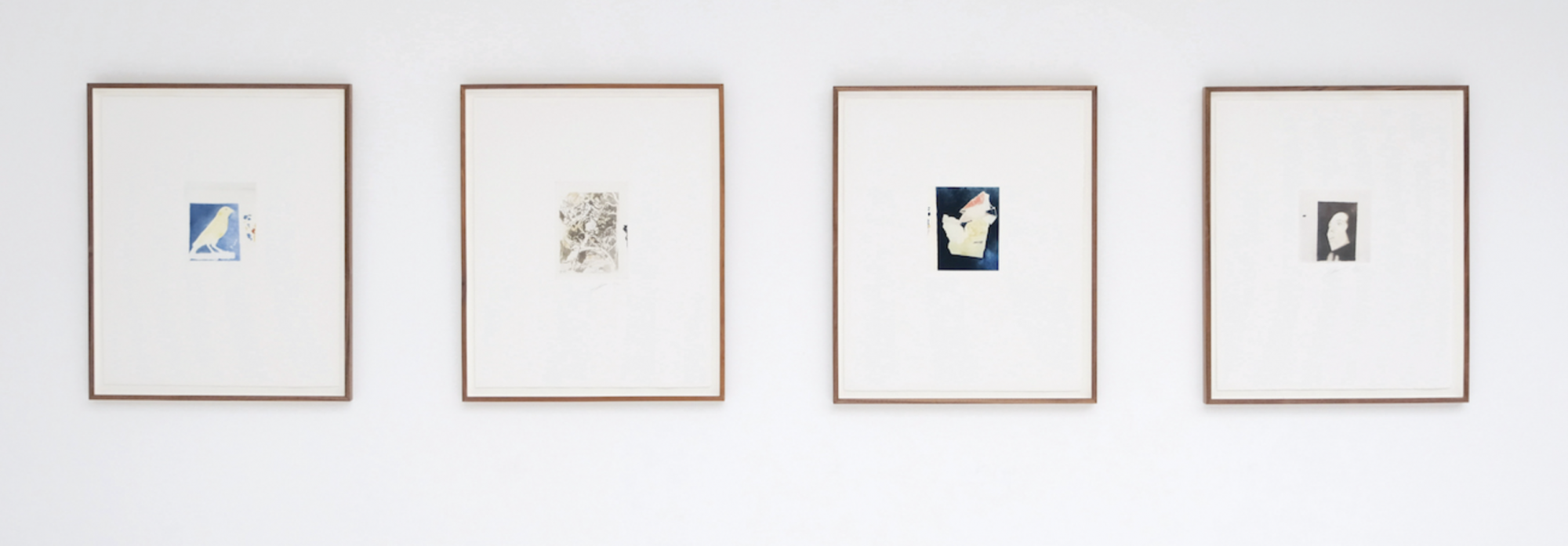Luc Tuymans on The Rumour:
The latter originated in something I experienced during a holiday in Brittany. We visited various chateaux, and every time I was amazed to find that, at the entrance to the chateau, there was a little dome-like stone building with a little hole at the top – no windows or doors. In one case I overheard how a French father explained this to his son. When the holes were extended upward with a vertical line and these vertical lines were connected, in turn, with a horizontal line, one could determine the dimensions of the castle owner’s estate.
Naturally, at that time peasant labourers were not permitted to own pigeons. That was a privilege of the aristocracy. The latter ate the pigeons, and used them as messengers. When the French Revolution broke out, the first thing the people who had belonged to a property owner did was to wring all of the pigeons’ necks.
The eyes I painted were taken from a book on pigeon racing, which is very widespread in Belgium. Pigeon breeders can recognize the quality of the pigeons in the way in which the pigeons’ eyes are set in their sockets. This is why there are manuals which show an enlargement of the eyes next to every illustration of a pigeon. It becomes very clear, that these are not human eyes.
From the point of view of color, the eyes are spectacular. The first eye one sees is the darkest one. It is hung in such a way that the centre of the painting is at a height of 1.60 metres. Next to this, there is a large orange eye hanging below, and above it a darkened, smaller one. The uniformity of the arrangement is thus violated. One naturally has the feeling of being looked at – but in an enlargement.
The Rumour
Price on Request
Suite of seven color lithographs mounted on four panels of painted plexiglas and wood, with birdcage
Size panel 1: 91.4 × 231.1 × 6.4 cm; size panel 2: 91.4 × 436.9 × 6.4 cm
Color lithographs printed by Maurice Sanchez, New York. Wooden panels and frames by James Cooper, New York. Originally published by Brooke Alexander, New York.
Edition of 18
Each edition arrives in 2 crates and will be mounted by our services.
Published in 2002

Luc Tuymans is considered one of today’s most influential painters, assuring painting’s enduring legacy by invigorating the medium for a modern context. Born in 1958 in Antwerp, where he lives and works, Tuymans is steeped in the great tradition of Northern European history painting, as well as a modern culture informed by photography, television, and cinema. This is evident in his canvases, where traditional painting collides with contemporary visual strategies, resulting in compositions that adopt technological methods, such as cropping, sequencing, or the close-up, to introduce new perspectives on painting and culture. His seemingly innocuous pictures are often grounded in previously existing imagery drawn from photographs, found images, film stills, and other contemporary visual artifacts.
Related books
other prints by this artist

Thank you for your interest in "The Rumour" by Luc Tuymans. We will get in touch with you shortly.
